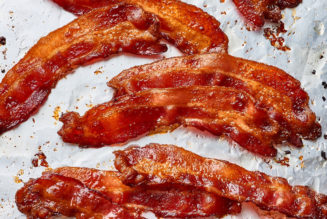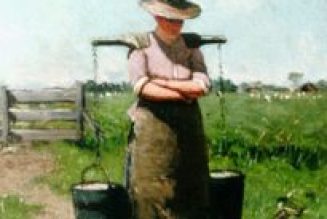Calling your chocolate chip cookie “perfect” is a bold move. But the British pastry chef Ravneet Gill had no problem doing it. So far, no one’s contested her claim.
At the end of March, she went Live on Instagram to bake her “perfect chocolate chip cookies,” from her first cookbook, “The Pastry Chef’s Guide: The Secret to Successful Baking Every Time,” which was published by Pavilion in Britain in the spring and arrived in the United States on Sept. 8.
People got to baking and shared their results on Instagram, the photos showing a cookie split in two, with an ideal wet-sand crumb surrounding a glossy pull of viscous molten chocolate. Ms. Gill, 29, reposted them all on her account.
Nearly six months later, she’s amassed 43,000 followers and “inadvertently caused a lot of people to start making cookies and cakes,” she said. “It just sort of kick-started a lot of people into realizing that this is so easy.”
Eight years ago, after completing an undergraduate degree in psychology, Ms. Gill decided to pursue pastry, her mind set on making “flawless patisserie,” or as she describes it in her book, “the stuff that looks unreal because it’s so gorgeous.” She secured an apprenticeship at a restaurant, picked up work at a chocolate shop, and began taking classes at Le Cordon Bleu in London. From there, she writes, she “leapt into kitchen after kitchen.”

In 2015, Ms. Gill started as a pastry chef at St. John, the London institution, where there were no elaborate compositions, garnishes or out-of-season ingredients. In that kitchen, she discovered the flawlessness of a plate of honeyed madeleines served unadorned, straight out of the oven, and of a syrup-drizzled British steamed sponge pudding enhanced with Irish stout. Versions of both recipes are in “The Pastry Chef’s Guide.”
“She is very good at passing on her knowledge and sharing her trade secrets,” said Alcides Gauto, who worked with Ms. Gill at the restaurant Llewelyn’s, via email.
Ms. Gill wrote the book for home cooks to “understand what it is they were doing and not be scared,” she said, and for chefs “who had more pastry knowledge to get to grips with it.”
She emphasized the importance of focusing on theory, something she feels most baking cookbooks skip over. Hers begins with “Pastry Theory 101,” which explains the most basic elements of baking, like butter, sugar, gelatin and leaveners, and how they function within recipes. Then she expands into the building blocks of pastry. The chapter on chocolate distinguishes ganache from crémeux; the one on custard, crème anglaise from crème pâtissière.
So while you won’t find a recipe for a lemon meringue pie in her book, you’ll learn how to make a crust in one chapter, lemon curd in another and Italian meringue in a third. Apply all three skills to make the pie you’d like. Beginners who don’t feel up to the challenge of tripartite confections can start with banana cake, rice pudding or those “perfect” cookies.
The cookies initially came from a chef she worked with at a private member’s club, who scribbled the formula on a piece of paper for her. Later, when the recipe went missing, she reverse-engineered them, running countless trials in order to put them on the opening menu at Llewelyn’s in 2017.
Ms. Gill shared the results with her co-workers, asking them which sugar they preferred in the cookies, which shape, which texture, bringing rigor and determination to perfecting the recipe. (That applies to projects beyond the kitchen, too: In 2018, she founded Countertalk, a network that connects and supports hospitality workers, and promotes jobs in healthy work environments.)
She landed on a blend of dark brown and caster (or superfine) sugars, and discovered that resting the dough in the refrigerator yielded a more substantive cookie (as opposed to a thinner, chewier one with its butter seeped out). Rolling the dough into balls right away, as opposed to chilling it first, gave her the gentle domes you like to see in the center of a chocolate chip cookie.
One surprising thing is the omission of vanilla, a given in most chocolate chip cookie recipes, starting with the standard on the Nestlé Toll House bag. Ms. Gill didn’t give it a second thought.
Since vanilla has become so pricey (it’s now the second most expensive spice in the world), she’s stopped adding it to recipes unless she wants to showcase its flavor — in a panna cotta, for instance, where its presence would be heightened. “It was an everyday ingredient, and now it’s not,” she said. “It’s like a special-treat ingredient.”
You won’t miss it. You may even prefer your chocolate chip cookies without vanilla going forward. The result is something that tastes closer to cookie dough — you get the flavor of the raw stuff, but the warmth, structure and caramelization that comes with baking.
“One is never enough,” Mr. Gauto confirmed.
“They are the best chocolate-chip cookies, actually, I think I’ve made,” said Felicity Spector, a journalist who tested out some of the cookbook’s recipes. “I’ve made lots of other ones.”
Many would argue that “best” is even better than “perfect.”
Recipe: Perfect Chocolate Chip Cookies
Join Our Telegram Group : Salvation & Prosperity
![A ‘perfect’ chocolate chip cookie and the chef who created it [scroll to end of article for recipe]…](https://salvationprosperity.net/wp-content/uploads/2020/10/a-perfect-chocolate-chip-cookie-and-the-chef-who-created-it-scroll-to-end-of-article-for-recipe-1050x600.jpg)








